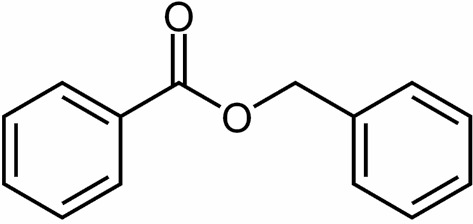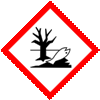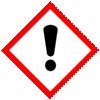Benzyl Benzoate EP BP IP USP NF FCC Food Grade Manufacturers, SDS GHS, MSDS Sheet |
Supplier, Manufacturer, Exporter of Benzyl Benzoate EP BP IP USP NF Grade, Muby Chemicals of Mubychem Group, established in 1976, is the original manufacturers of Specialty Chemicals, Pharmaceutical Excipient, Fragrance Food & Flavor chemicals, Reagent Grade Chemicals, Shale Gas Fracturing Chemicals in India. Mubychem Group has several manufacturing facilities spread across Western India and world wide contacts and toll manufacturers. We are exporting globally to countries like USA, Canada, Europe, UAE, South Africa, Tanzania, Kenya, Egypt, Nigeria, Cameroon, Uganda, Turkey, Mexico, Brazil, Chile, Argentina, Dubai, Korea, Vietnam, Thailand, Malaysia, Indonesia, Australia, China, Germany, France, Italy Portugal, Bangladesh, etc. The products are offered as per required specifications and in correct shape and size in mm or meshs or microns as specified by the buyer. The participating units have one or more accreditations like FDA - cGMP and GLP approval, ISO-9001 Certified, "REACH" Registered, ISO-14001, ISO/IEC 17025, ISO-22000, FSSC 22000, ISO 45001, Kosher Certified, Halal Certified, HACCP, FSSAI. We offer Commercial Pure & IP BP EP Ph Eur USP NF JP FCC Food Grade Analytical Reagent Grades of Chemicals |
| Bookmark this Web Site -- or -- Email This Page Info to a Colleague or Yourself |
Search our website here:







CAS No.120-51-4; EINECS No. 204-402-9; FEMA No. 2138
Molecular Weight 149.24, Molecular Formula C10H15N, HS Code ---**
How big is your requirement or how small
We serve it all.
Specifications, Safety Data Sheet, Manufacturing process details, Wholesale retail prices, Uses etc available on these pages for Benzyl Benzoate.
For MSDS Sheet Click
MSDS Sheet of Benzyl Benzoate Manufacturers
Spanish Benzoato de bencilo Fabricantes
Portuguese benzoato de benzila fabricantes
Benzyl Benzoate
USP NF EP BP IP & Commercial Pure Suppliers

Benzyl Benzoate BP Ph Eur Grade
Ph Eur
C14H12O2 -- 212.2 -- CAS 120-51-4
DEFINITION
Phenylmethyl benzoate.
Content: 99.0 per cent to 100.5 per cent.
CHARACTERS
Appearance: Colourless or almost colourless crystals or colourless or almost colourless, oily liquid.
Solubility: Practically insoluble in water, miscible with ethanol (96 per cent), with methylene chloride and with fatty and essential oils.
IDENTIFICATION
First identificationı A.
Second identificationı B, C.
A. Infrared absorption spectrophotometry. Comparison Ph. Eur. reference spectrum of benzyl benzoate.
B. To 2 g add 25 ml of alcoholic potassium hydroxide solution and boil under a reflux condenser for 2 h. Remove the ethanol on a water-bath, add 50 ml of water and distill. Collect about 25 ml of distillate and use it for identification test C. Acidify the liquid remaining in the distillation flask with dilute hydrochloric acid. A white precipitate is formed that, when washed with water and dried in vacuum melts at 121C to 124C.
C. To the distillate obtained in identification test B add 2.5 g of potassium permanganate and 5 ml of dilute sodium hydroxide solution. Boil under a reflux condenser for 15 min, cool and filter. Acidify the filtrate with dilute hydrochloric acid. A white precipitate is formed that, when washed with water and dried in vacuum, melts at 121C to 124C.
TESTS
Acidity: Dissolve 2.0 g in ethanol (96 per cent) R and dilute to 10 ml with the same solvent. Titrate with 0.1 M sodium hydroxide using phenolphthalein solution R as indicator. Not more than 0.2 ml is required to change the colour of the indicator to pink.
Relative density: 1.118 to 1.122.
Refractive index: 1.568 to 1.570.
Freezing point: Minimum 17C.
Sulphated ash: Maximum 0.1 per cent, determined on 1.0 g.
ASSAY: To 2.000 g add 50.0 ml of 0.5 M alcoholic potassium hydroxide and boil gently under a reflux condenser for 1 h. Titrate the hot solution with 0.5 M hydrochloric acid using 1 ml of phenolphthalein solution as indicator. Carry out a blank determination. 1 ml of 0.5 M alcoholic potassium hydroxide is equivalent to 106.1 mg of C14H12O2.
Specifications of Benzyl Benzoate USP Grade:
C14H12O2 212.24
Benzoic acid, phenylmethyl ester.
Benzyl benzoate --- CAS 120-51-4.
Benzyl Benzoate contains not less than 99.0 percent and not more than 100.5 percent of C14H12O2.
Packaging and storage: Preserve in tight, well-filled, light-resistant containers, and avoid exposure to excessive heat.
Identification:
Specific gravity: between 1.116 and 1.120.
Congealing temperature: not lower than 18C. Congelation may be brought about by addition of a fragment of previously congealed Benzyl Benzoate when the temperature has reached the expected congealing temperature.
Refractive index: between 1.568 and 1.570 at 20 .
Aldehyde: Transfer 10.0 g to a 125-mL conical flask containing 50 mL of alcohol and 5 mL of hydroxylamine hydrochloride solution (3.5 in 100), mix, and allow to stand for 10 minutes. Add 1 mL of bromophenol blue and titrate with 0.1 N sodium hydroxide to a light green endpoint. Perform a blank determination and match the color of the endpoint with that of the titrated test solution. The net volume of 0.1 N sodium hydroxide consumed does not exceed 0.50 mL (0.05% as benzaldehyde).
Acidity: Add 2 drops of phenolphthalein to 25 mL of alcohol and add 0.020 N sodium hydroxide until a pink color is produced. Add 5.0 g of Benzyl Benzoate, mix, and titrate with 0.020 N sodium hydroxide: not more than 1.5 mL of 0.020 N sodium hydroxide is required to restore the pink color.
Assay: Transfer about 2 g of Benzyl Benzoate, accurately weighed, to a conical flask fitted with a reflux condenser, add 50.0 mL of 0.5 N alcoholic potassium hydroxide and boil gently for 1 hour. Cool, add phenolphthalein and titrate with 0.5 N hydrochloric acid. Perform a blank determination. Each mL of 0.5 N alcoholic potassium hydroxide is equivalent to 106.1 mg of C14H12O2.
We also produce Benzyl Benzoate IP EP Grade.
For Original Monographs of IP Indian Pharmacopoeia BP British Pharmacopoeia USP US Pharmacopoeia FCC Food Grade product, please check with the respective web-pages or books.
We manufacture and supply as under:
Benzyl Cyanide or Benzylnitrile
Benzoin or Benzoylphenylcarbinol
Iminodibenzyl or Imino Dibenzyl
Phenethyl alcohol, 2-Phenyl Ethanol.
(S)-1-(4-Methoxybenzyl)-1,2,3,4,5,6,7,8-Octahydroisoquinoline or Octabase Mandelate.
Manufacturers:
MUBY CHEMICALS
Ambernath Mumbai, Ankleshwar Gujarat, India
TEL: (OFFICE) +912223770100, +912223726950
Current Date Time in India GMT+5:30
e-mail: info@mubychem.com
USA, Canada, Mexico and other American neighbouring buyers may
e-mail: us@mubychem.com
Call toll-free 1-877-682-9243 (1-877-MUBYCHEM)

Copyright and Usual Disclaimer is Applicable.
Last 30 October, 2025




Exporters to USA Canada UAE Europe South Africa Tanzania Kenya Uganda Egypt Nigeria Turkey Mexico Brazil Argentina Chile Dubai etc.
Global or International Suppliers, Exporters, Importers, Manufacturers
I shall pass through this world, but once. If therefore, there is any good that I can do, or if there is any favor that I can show to a fellow human being, let me do it now. Let me not defer or neglect it. For I shall not tread this way again
Benzyl Benzoate, SDS Safety Data Sheet
MSDS Sheet, Material Safety Data Sheet 02-Oct-20
1. PRODUCT IDENTIFICATION
Product Name & Other Names: Benzyl Benzoate
CAS Number: 120-51-4
EINECS EC Number: 204-402-9
Molecular Formula: C6H5COOCH2C6H5
Molecular Weight: 212.24
Relevant uses and uses advised against (if any): Industrial use only.
Supplier: As per letterhead.
2. HAZARDS IDENTIFICATION
GHS, Globally Harmonized System Classification in accordance with 29 CFR 1910
Classification according to Regulation (EC) No 1272/2008
Acute toxicity, oral Category 4 H(302)
Hazardous to the aquatic environment, long-term hazard Category 2 (H411)
Labeling according to GHS & Regulation (EC) No 1272/2008
GHS Label Elements  Aquatic Toxicity | GHS Label Elements  Irritant |
Signal Words: Warning
Hazard Statements:
H302: Harmful if swallowed.
H411: Toxic to aquatic life with long lasting effects.
Precautionary Statements:
P264: Wash … thoroughly after handling.
P270: Do not eat, drink, or smoke when using this product.
P273: Avoid release to the environment.
P330: Rinse mouth.
P301+312: IF SWALLOWED: Call a POISON CENTER or doctor/physician if you feel unwell.
P391: Collect spillage.
P501: Dispose of contents/container in accordance with local/national regulation.
Classification according to EU Directives 67/548/EEC or 1999/45/EC:
Hazard Symbols:
Xn Harmful R22
N Dangerous for the environment R51/53
Risk Phrases:
R22 = Harmful if swallowed.
R51/53 = Toxic to aquatic organisms, may cause long-term adverse effects in the aquatic.
3. COMPOSITION / INFORMATION ON INGREDIENTS
Product Name & Other Names: Benzyl Benzoate
CAS Number: 120-51-4
EINECS EC Number: 204-402-9
FEMA: 2138
4. FIRST-AID MEASURES
Always seek medical attention after first aid measures are provided.
Eye Contact: Rinse immediately with plenty of water for 10 minutes at least. Contact a physician if symptoms persist.
Skin Contact: Wash thoroughly with soap and water; flush with plenty of water. Take off spoilt clothes. Contact physician if symptoms persist.
Ingestion: Wash the mouth with water; seek medical advice immediately.
Inhalation: Remove from exposure site to fresh air and keep at rest. Obtain medical advice.
5. FIRE-FIGHTING MEASURES
Extinguishing Media Recommended: Use water spray, alcohol-resistant foam, dry chemical, or carbon dioxide.
Non-Recommended: Do not use direct water jet on burning material.
Extinguishing Procedure: Closed containers may build up pressure at elevated temperatures. If possible, containers should be cooled with a water spray.
Special Information: In the event of a fire, wear full protective clothing and NIOSH-approved self-contained breathing apparatus with full face piece operated in the pressure demand or other positive pressure mode. At high temperatures under fire conditions, it may produce toxic or irritating fumes.
6. ACCIDENTAL RELEASE MEASURES
Personal precautions, protective equipment, and emergency procedures: Avoid breathing dust/fumes/gas/mist/vapors/spray. Use individual protective equipment (waterproof boots, suitable protective clothing, safety glasses, etc.). Restrict unprotected personnel from the area. Prevent any contact with hot surfaces. Do not approach facing the wind. Do not touch the spilled material.
Environmental precautions: Do not let the product enter drains, soil, or water sources.
Methods and materials used for containment Cleanup procedures and Storage: Contain spilled material. Cover with an inert, non-combustible absorbent material, (e.g. sand, earth, diatomaceous earth, vermiculite). Vacuum or sweep up and remove to an approved disposal container. Avoid open flames or other sources of ignition.
7. HANDLING AND STORAGE
Precautions for safe handling: Apply according to good manufacturing and industrial hygiene practices. Ensure proper ventilation. Wash thoroughly after handling. Do not drink, eat, or smoke while handling. Avoid contact with skin, eyes, and clothing. Minimize dust generation. Avoid breathing dust/fumes/gas/mist/vapors/spray. Avoid contact with eyes, skin, and clothing. Keep container tightly closed. Avoid ingestion and inhalation. Use individual protective equipment (waterproof boots, suitable protective clothing, safety glasses, etc.). Prevent any contact with hot surfaces.
Conditions for safe storage, including any incompatibilities: Store in cool, dry, and ventilated area away from heat sources and protected from sunlight in tightly closed original container. Keep air contact to a minimum. Do not leave the material container open. Store protected from heat, sparks and ignition sources and incompatible materials. Avoid contact with skin and eyes. Avoid inhalation of dust/mist/vapor. Do not store with incompatible materials like strong acids, alkali, or oxidizing agents. Keep air contact to a minimum. Keep away from ignition sources and naked flame.
8. EXPOSURE CONTROL
Respiratory Protection: Avoid to breath directly on the product. Apply local ventilations when appropriate.
Ventilation System: A system of local and/or general exhaust is recommended to keep employee exposures as low as possible. Local exhaust ventilation is generally preferred because it can control the emissions of the contaminant at its source, preventing dispersion of it into the general work area.
Personal Respirators (NIOSH Approved): For conditions of use where exposure to dust or mist is apparent and engineering controls are not feasible, a particulate respirator may be worn. For emergencies or instances where the exposure levels are not known, use a full-face positive-pressure, air-supplied respirator.
Skin Protection: Wear protective gloves and clean body-covering clothing.
Eye Protection: Use chemical safety goggles and/or full face shield where dusting or splashing of solutions is possible. Maintain eye wash fountain and quick-drench facilities in work area.
Other Control Measures: Maintain good housekeeping in work area. Dust deposits on floors and other surfaces may pick up moisture and cause the surfaces to become slippery and present safety hazards. Handle in accordance with good industrial hygiene and safety practice. Wash hands after handling.
9. PHYSICAL AND CHEMICAL PROPERTIES
Appearance: It is colorless oily-liquid / crystalline-solid.
Odor: Light, Balsamic, Almonds-like.
Odor threshold: Not available.
pH: Not available.
Relative density: Not available.
Flash Point (C): 148C
Boiling Point (C): 323C - 325C
Melting Point (C): 18C - 19C.
Auto-ignition temperature: Not available.
Decomposition temperature: Not available.
Upper/lower flammability or explosive limits: Not available.
Vapor pressure: Not available.
Vapor density: Not available.
Evaporation rate: Not available.
Flammability (solid, gas): Not available.
Partition coefficient: n-octanol/water: Not available.
Solubility(ies): Not available.
Viscosity: Not available.
Molecular Formula: C6H5COOCH2C6H5
Molecular Weight: 212.24
10. STABILITY AND REACTIVITY
Reactivity: It presents no significant reactivity hazards, by itself or in contact with water. Avoid contact with strong acids, alkali, or oxidizing agents.
Decomposition: Carbon monoxide and unidentified organic compounds may be formed during combustion.
11. TOXICOLOGICAL INFORMATION
LD50 Oral - rabbit - 1,680 mg/kg
LD50 Dermal - rabbit - 4,000 mg/kg
LD50 Oral - rat - 1900 mg/kg
Carcinogenicity: No component of this product present at levels greater than or equal to 0.1% is identified as probable, possible or confirmed human carcinogen by IARC, ACGIH, OSHA and NTP.
Mutagenic Effects: Not available.
Developmental Toxicity: Not available.
Reproductive Effects: No information available.
12. ECOLOGICAL INFORMATION
LC50 Fish 96 hour 2.3-3.9 mg/L Species Brachydanio rerio
Biodegradability: Readily biodegradable.
Results of PBT and vPvB assessment: This substance/mixture contains no components considered to be either persistent, bioaccumulative and toxic (PBT), or very persistent and very bioaccumulative (vPvB) at levels of 0.1% or higher.
13. DISPOSAL CONSIDERATIONS
In accordance with local environmental laws. Avoid disposing into drainage systems and into the environment.
14. TRANSPORT REGULATIONS
DOT USA & ADR/RID Europe:
UN number: 3082 Class: 9 Packing group: III
Proper shipping name: ENVIRONMENTALLY HAZARDOUS SUBSTANCE, LIQUID, N.O.S. (Benzyl benzoate).
IMDG & ADR/RID:
UN number: 3082 Class: 9 Packing group: III EMS-No: F-A, S-F
Proper shipping name: ENVIRONMENTALLY HAZARDOUS SUBSTANCE, LIQUID, N.O.S. (Benzyl benzoate).
IATA:
UN number: 3082 Class: 9 Packing group: III
Proper shipping name: Environmentally hazardous substance, liquid, n.o.s. (Benzyl benzoate)
15. REGULATORY INFORMATION
USA:
SARA 302: No chemicals in this material are subject to the reporting requirements of SARA Title III, Section 302.
SARA 313: Does not contain any chemical components with known CAS numbers that exceed the threshold (De Minimis) reporting levels established by SARA Title III, Section 313.
SARA 311/312 Hazards: Immediate Health Hazard. See section 2.
California Prop. 65 Components: Not listed.
Section 16 - Additional Information
European Labeling in Accordance with EC Directives:
H302 = Harmful if swallowed.
H411 = Toxic to aquatic life with long lasting effects.
Classification according to EU Directives 67/548/EEC or 1999/45/EC:
Hazard Symbols:
N = Dangerous for the environment
Xn = Harmful
Risk Phrases:
R22 = Harmful if swallowed.
R51/53 = Toxic to aquatic organisms, may cause long-term adverse effects in the aquatic environment.
Disclaimer:
****************************
Our company provides this MSDS sheet in good faith but makes no representation as to its comprehensiveness or accuracy. This SDS sheet is intended only as a guide to the appropriate precautionary handling of the material by a properly trained person using this product. The above information has been compiled from various sources and has the possibility of discrepancy and being out-dated information. Individuals receiving the information must exercise their independent judgment and do further search in determining its appropriateness for a particular purpose. In no case shall our company be liable to loss or damages by the product user.
****************************
















